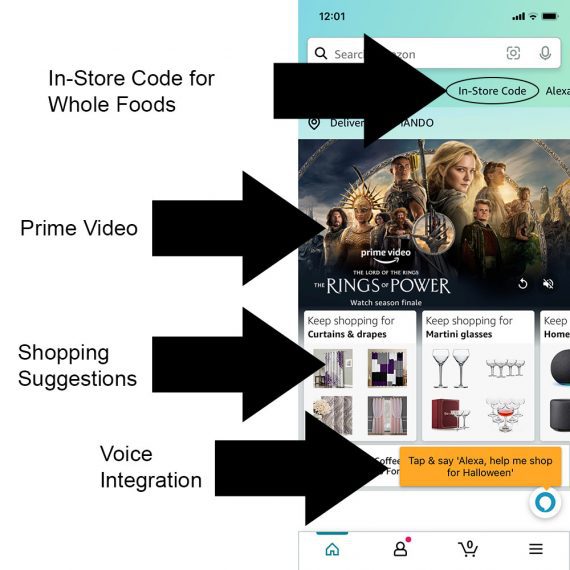If recent consumer surveys are correct, a comprehensive mobile shopping experience will almost certainly include mobile apps, text messaging, and conversational commerce.
One such report from Square, the payment processing firm, and Wakefield Research found that 30% of American adults surveyed in July 2022 expected to increase their mobile shopping activities in the next 12 months. And just about all respondents (98%) wanted to interact with businesses on a mobile device.
Retailers should pay close attention to this trend since it could require new investments. Early adopters could enjoy a competitive advantage but will take on financial risk as they speculate how the uses will evolve.
Three technologies could soon dominate mobile shopping experiences. One, mobile ecommerce apps, is not new.
- Mobile shopping apps.
- Text (SMS or MMS) message shopping.
- Conversational commerce.
Mobile Shopping Apps
The use of apps for mobile shopping could continue to grow in popularity as shoppers seek convenience.
Many retail apps allow consumers to purchase items with just a few taps on their smartphones. These apps have been designed for the mobile user and offer a streamlined shopping experience.
Amazon’s mobile app does this well. Shopping from a smartphone is as easy as a desktop computer. Amazon has closely tied its mobile app to its Whole Foods grocery stores. The app syncs with those stores and reminds shoppers of previous searches, shows Prime Video promos, and even offers voice search.

Amazon’s mobile ecommerce app offers features that improve the shopping experience and encourage shoppers to use it to make repeat purchases.
Ecommerce shops, especially smaller ones, have long debated the choice of a mobile-friendly website or a mobile app. Now the answer might be both.
The Square survey found that 81% of Millennials (age range: late 20s to early 40s) and 73% of Gen Zs (teens and 20s) use their smartphones for shopping. These shoppers imply a commitment when installing a brand’s mobile app, which could increase repeat purchases.
Text (SMS or MMS) Shopping
Text message shopping has only recently taken off. Gary Vaynerchuk’s WineText is among the most well-known and successful examples.
This type of mobile shopping allows consumers to purchase items by sending a text message to a short code or mobile number.
In the case of WineText, the shopper provides payment information when she signs up. When WineText offers, say, a Pinot Noir for $14.39 a bottle, the shopper replies only with the number of bottles she wants, completing the order.
Soon other ecommerce platforms will offer this functionality. Imagine a consumer goes to a Miva-powered online storefront. That person makes a purchase in the traditional way via a computer. The platform securely stores payment and shipping information. At checkout, the shopper can choose to receive notifications and marketing messages via text.
Then, shoppers who opt-in to text marketing messages need only to reply with a “yes” or the number of items desired since Miva retains both the payment and shipping information. The barriers to purchase are evaporating.
Conversational Commerce
Conversational commerce is a new phenomenon made possible by the rise of messaging apps such as Facebook Messenger, WhatsApp, and WeChat.
Conversational commerce allows consumers to shop via live chat with customer service representatives or via chatbots. These conversations take place on messaging apps designed for communication rather than commerce.
A successful example of conversational commerce is 1-800-Flowers. The company has built a chatbot on Facebook Messenger that allows consumers to order flowers by sending a message. The bot then guides the shopper through choosing a bouquet, adding a personalized message, and selecting a delivery date.
Impressively, 1-800-Flowers’ chatbot can handle the entire purchase process without transferring the shopper to a human.
While in its early stages, conversational commerce shows a lot of promise and may eventually rival traditional ecommerce.





